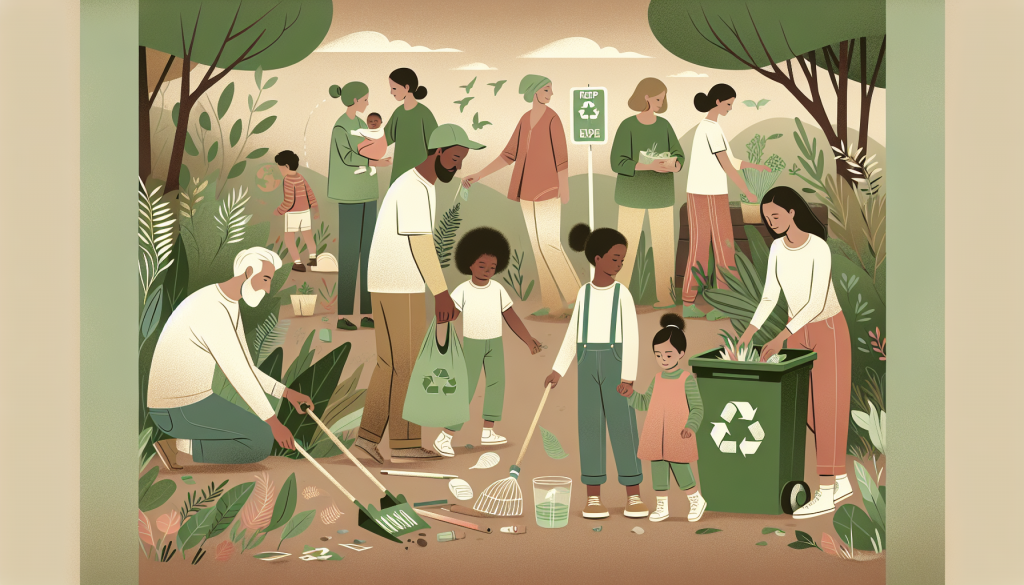“`html
Teaching Children About Environmental Responsibility
As parents, one of the most meaningful gifts we can give our children is the ability to care for the world around them. Teaching kids about environmental responsibility not only benefits the planet but also fosters values such as compassion, resourcefulness, and accountability. In this article, we’ll explore why raising environmentally conscious children is essential, how parents can integrate green parenting principles into daily life, and practical tips for inspiring eco-awareness in your family.
Why Environmental Responsibility Matters
In a world where climate change and environmental degradation impact every aspect of life, instilling a sense of responsibility toward nature is more crucial than ever. Research shows that children who learn about sustainability early are more likely to develop lifelong habits that protect the environment. But teaching environmental responsibility isn’t just about conserving resources—it also nurtures vital psychological needs, including:
- A sense of autonomy: Making eco-friendly choices empowers children to feel capable and impactful.
- Connection to others: Understanding ecological systems fosters empathy for people, animals, and the planet.
- Self-expression: Activities like gardening or creative recycling allow kids to express their individuality while contributing to a greater cause.
How to Teach Environmental Responsibility to Children
Teaching children about environmental responsibility doesn’t have to be overwhelming. By incorporating small, everyday actions into your family’s routine, you can build a strong foundation for lifelong eco-awareness. Below are some science-backed strategies and examples to guide you.
1. Be a Role Model
Children learn by observing their parents. If you want your kids to adopt sustainable habits, start by modeling those behaviors yourself. For example:
- Recycle consistently and explain why it’s important.
- Choose reusable shopping bags, water bottles, and containers.
- Minimize food waste by planning meals and composting scraps.
When kids see you making environmentally conscious choices, they’re more likely to follow suit. You can even involve them in these activities, turning everyday tasks into teachable moments.
2. Make Learning Fun and Hands-On
Children retain information better when they’re actively engaged. Consider introducing your kids to environmental concepts through fun, hands-on activities such as:
- Starting a small garden together and teaching them about plant growth cycles.
- Creating DIY crafts from recycled materials.
- Organizing a family cleanup day at a local park or beach.
These activities not only teach valuable skills but also instill a sense of pride and ownership in protecting the environment.
3. Explain the “Why” Behind Your Actions
Children are naturally curious. Instead of simply asking them to follow eco-friendly practices, take the time to explain the reasons behind them. For instance:
- When turning off the lights, explain how conserving energy helps reduce greenhouse gas emissions.
- Discuss the impact of plastic pollution when encouraging them to use reusable items.
- Share age-appropriate facts about endangered species to foster empathy for wildlife.
By connecting actions to their outcomes, children develop a deeper understanding of their role in protecting the planet.
4. Encourage Problem-Solving and Creativity
One of the best ways to empower children is to involve them in solving environmental challenges. For example:
- Ask them to think of ways to reduce water usage at home.
- Encourage them to design eco-friendly inventions or solutions.
- Support their participation in school or community sustainability projects.
These activities not only build critical thinking skills but also give children a sense of agency and accomplishment.
5. Foster a Love for Nature
Developing a connection with nature is key to nurturing environmental responsibility. Spend time outdoors as a family, exploring parks, forests, or even your backyard. Activities like hiking, birdwatching, and stargazing help children appreciate the beauty of the natural world and understand why it’s worth protecting.
Practical Recommendations for Parents
Incorporating green parenting principles doesn’t have to be complicated. Here are some simple, actionable tips to get started:
- Read together: Choose books that teach kids about sustainability, animals, and ecosystems.
- Limit screen time: Encourage outdoor play instead of excessive use of electronics, which consume energy.
- Create eco-friendly traditions: Celebrate Earth Day as a family or start a seasonal tree-planting tradition.
- Support eco-conscious brands: When shopping, opt for products that are sustainably sourced and ethical.
Remember, small changes can lead to big impacts over time. Celebrate progress, and don’t be afraid to learn and grow alongside your children.
Conclusion
Teaching children about environmental responsibility is a rewarding journey that benefits both your family and the planet. By modeling sustainable habits, making learning fun, and fostering a love for nature, you can empower your kids to become mindful stewards of the earth. The values and skills they develop today will shape a brighter, greener future for generations to come.
For more tips and resources on parenting and child development, visit our Child Mind website. Together, let’s inspire the next generation to care for our planet with compassion and creativity.
“`

